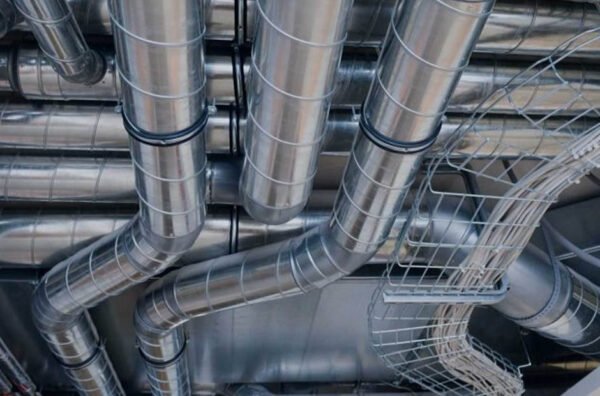The call for innovation in the construction materials offers everyone involved in the construction value chain, including those responsible for supplying the building materials for a project. The use of these materials began centuries ago. We have found ways to improve the material to enhance its properties continually, and our customers get best-in-class materials for their projects. However, there is even so much work to be done to develop and integrate advanced building materials. That’s why we included this topic in one of the five categories of this year’s Constructions Startup competition. We are looking for startups that offer an alternative to conventional materials with better properties and an evolution of the materials currently used in the industry.
Construction companies lose millions in the customer acquisition phase. The price of a targeted inbound call in this area ranges from 3,000 to 25,000 rubles. After the first communication with a manager, the customer moves to the phase of a commercial offer, where it is successfully lost.
Helical piers are often the first choice when it comes to building foundations in new construction projects. They are easy to install, eco-friendly, and cost-effective. They have a wide variety of applications and can easily and quickly construct foundations for most residential, commercial, and industrial structures. The cost of using helical piers in new construction depends upon various factors, including the level of support required and the type of soil.
A pier foundation isn’t just for beachfront property. Unless the structure is in a beach community, a pier foundation raises a building 18-36 inches off the ground. Before the 1960s, pier foundations were very popular. While pier foundations are still fairly common today with new home builders, slab foundations have eclipsed them in popularity because they’re easier and less expensive to build.
Read more about – Pier and beam foundation repair.
Table of Contents
How can a shortage of building materials affect you?
Oneself builder
Material shortages can be a blow to self-build projects involving steel, or wood-frame construction-both low materials-as material costs can rise sharply.
DIYers
Construction product suppliers such as Dyson Corp are under increasing pressure, putting home improvement projects in doubt. For instance, according to the Construction Leadership Council (CLC), landscaping products and bagged cement are in short supply.
Maintenance and Renovation
Repairers could also be affected by rising prices. The cost of repair and maintenance materials rose 2.1 percent from May to June. It will increase 15.6 percent from June 2020 to June 2021, according to BEIS’ monthly Construction Materials and Components report for July.
Suggestions included longer delivery times and the ability to order in advance. Louise Roebling, a partner in Bevan Brittan’s construction practice, said the risk-sharing could go as far as contractors bear most of the risk. She added that other joint arrangements would depend on the terms: “Pre-orders and supplier payments will likely need to be secured (e.g., block notes, down payment guarantees) to protect the employer from insolvency.”
Which Materials are Affected?
Timber
Since the first blockade in March 2020, there has been a shortage of wood throughout the country, and imports remain a problem given the high demand for wood and wood products.
Steel
Steel demand is high worldwide, and the shortage could last until the end of the year. In May, the British Electrical and Allied Manufacturers Association said that a sharp decline in steel production in the early 2020s has led to a global steel shortage, and British Steel recently stopped accepting orders for structural steel sections due to “exceptional demand.”
According to the federation’s executive director, James Tallman, about half of the National Federation of Roofing Contractors have reported a shortage of concrete tiles. Delivery times for concrete shingles average 20 to 36 weeks, while clay shingles average 4 to 8 weeks.
Bagged cement supply has been tight since late last year. In July, Pal Chana, executive director of the Mineral Products Association, warned that the store would not return to normal levels until late this year.

Gypsum and Plasterboard
There was a significant shortage of gypsum board early in the year, and although the supply situation improved early in the year, the lead time for gypsum board supply increased, as reported by the CLC in June.
There was also reportedly a shortage :
- Concrete
- Insulation
- PIR Insulation
- Brick and block
- Kitchen cladding
- Aggregate
- PE and PP plastics
- Screws
- Fixings
- Sanitary ceramics
- Sanitary
- Shower enclosures
Storage Materials
Shortage of building materials is partly due to increased construction and housing activity in 2020, especially during the first freeze period.
This led to a slowdown in materials production at some EU plants, and supply chains have remained tight since then.
Construction output hit a 24-year high in June, the most significant increase in construction activity since 1997, according to the June construction PMI from IHS Markit and the Chartered Institute of Purchasing and Supply (CIPS). However, your supply is not keeping up with demand, and supplier delivery times have lengthened due to “severe shortages of goods and construction materials.”
How will they improve our lives?
It wouldn’t occur to you to build the next Burj Khalifa using the same methods and materials as the Roman Colosseum, would it? Just the thought of it sounds like a joke. But why are we still using the same materials as 50 or 60 years ago and not questioning ourselves? Maybe it’s the “if it ain’t broke, why fix it” mentality? It’s not broken, but it could be much better!
For example, the construction industry is fighting carbon emissions. As one of the world’s largest CO2 emitters, this sector needs to rethink its materials, processes, and operations to reduce its environmental impact significantly. To do this, CEMEX is entering into agreements with other companies and startups for carbon capture technology and launching products such as Virtua, its first CO2-free concrete mortar, which is already available in markets worldwide.
The industry needs innovation. We talk about smart cities and buildings, the digitization of processes, and the introduction of new technologies.
Are we telling you that advanced building materials can help construction professionals improve their work and even the industry itself? Exactly! As materials become more advanced and sophisticated, the designs in which they are used and the methods employed on a project change.
Sustainability
Foundation is serious business; they are so important that the whole home’s structural integrity rests on the soundness of its foundation, and it depends on the strength of the soil underneath the foundation. Expansive soils and water are probably the two most common causes of foundation problems. So for homeowners – it’s essential to understand the types of foundation problems, solutions, and the repair process.
Older building materials emit more carbon dioxide into the air, a significant problem in the sector. By taking a sustainable approach to material development, materials can be highly sustainable and incorporate various energy generation, carbon capture, and pollution reduction. In addition, they comply with new regulations in different regions and are suitable for the end user’s health who interacts with the building and its environment.
- In addition, efforts must be made to develop and use materials made from industrial waste or by-products.
- In recent months, wages have skyrocketed in some areas as demand outstrips labor supply, and some trades are raising wages due to overwork.
- Contractor Andy Stevens of Eclipse Property Consultants says, “Wage costs have skyrocketed in some areas, and that’s due to market factors. First, some workers from Eastern Europe have returned to their home countries as a result of the Brexit; this has hit the Southeast in particular.”
- Demand for construction workers is currently near a 20-year high, with construction employment expected to fall from 2.3 million in 2017 to 2.1 million by the end of 2020. This represents a 4% decline for UK-born workers and a 42% decline for EU-born workers.
CEMEX Ventures supporting the development of new construction materials
By seeking out startups developing innovative building materials and partnering them with CEMEX, a leader in the building materials industry, we are bridging the gap between entrepreneurs and a global company to encourage the development and widespread adoption of these materials.
- If you are a contractor who has already set out to create the next big thing in the building materials industry, we salute your courage and look forward to seeing what you have in mind to help you reach your maximum potential!
- But don’t forget that existing materials in the industry also need to be innovated and redesigned to meet today’s industry demands. How can we improve them? How can we turn what makes them great into something extraordinary? That’s our challenge, and we look forward to the solutions they will bring to improve the construction industry with these new additions.
- If you’re planning or about to plan any construction work this summer, it’s crucial to plan as far in advance as possible so you’re not surprised by shortages or price increases.
- This is especially important because people buy more DIY and landscaping products in the spring and summer, putting additional pressure on supplies.
- CLC advises self-builders to work closely with the supply chain and communicate their needs ahead of time to suppliers, retailers, and tradespeople.
- Brian Berry says: “Product availability is proving to be a significant and ongoing challenge for UK builders, and consumers should be aware that the cost of their building projects could change in the coming months as a result of these pressures.
- “However, I would urge homeowners not to compromise on quality and customer service and go with the builder with the cheapest quote.
- You can also use services like Environmate to find free and cheap building materials for your project.
- As you may already know, new materials have been developed for some time, but none of them have taken hold or become the “new normal” in the industry in recent years.
- From translucent wood to self-repairing concrete to anti-pollution bricks, new materials are constantly emerging and falling into the hands of the most open-minded contractors. They are willing to bet on them and use them in their projects.
- However, we want to focus on the details and benefits of new materials in the industry to understand better why it is essential to introduce them into production
If you would like to submit similar guest post, Please check Here





